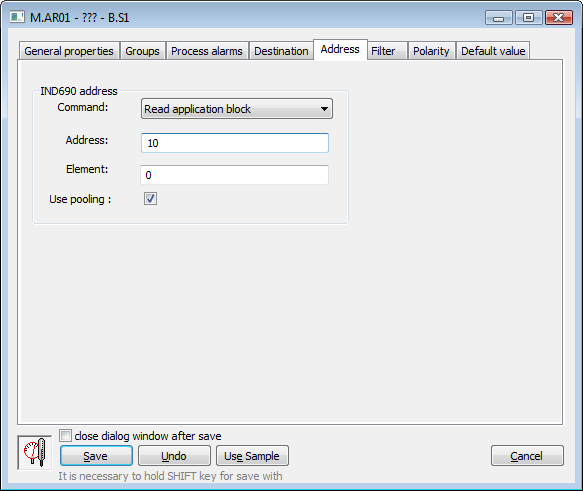IND690 communication protocol
Protocol specification
Communication line
I/O tag configuration
Document revisions
Protocol specification
This protocol is primarily intended for the configuration and acquisition of data from the weighing terminal Mettler Toledo IND690. The communication with the device is based on sending the requests for writing and reading of the application blocks. They are uniquely identified by their address, resp. the subaddress. You can find a more detailed description in the reference book of the respective device.
Communication line
As the device contains an RS-232 interface, it can communicate with the D2000 KOM process through two types of communication lines. The first way is to connect the device directly with the "Serial" line, or to use a converter. It converts data from RS-232 to UDP stream, which is processed by the "SerialOverUDP Device Redundant" line.
I/O tag configuration
These I/O tags can be used: Ai, Ao, Ci, Co, Di, Dout, TxtI, TxtO, TiA, ToA
I/O tag address consists of three basic parts:
- Command - enables choosing a command that the D2000 KOM process will send to the device. For an application which uses this protocol, we implemented two commands - "Read application block" and "Write application block".
- Address - defines the particular number of the application block.
- Element - defines an element, which is stored in the memory of application block.
As an example, we can use the application block No. 323. It contains the following elements:
- Name
- Target weight
- Limit 1
- Limit 2
- Tolerance
- Valve
- End timer (sec)
- Rel. switch-on value
- Rel. switch-on value
- Absolute switch-on value
- Absolute shutoff value
- Switch-on duration in seconds
It means, that 15 I/O tags must be created for this application block. I.e. 14 I/O tags for the individual values of application block, numbered from 1..14 and one "root" I/O tag of value 0, which is used as follows:
- Using the address dialog box, it enables the polling of request which will be sent to the device.
- After processing the answer from the device, the I/O tag will be set to a value of 0, if the device has processed the request correctly.
- If the processing of request failed, the I/O tag is set as follows:
-1 Unspecified error
-2 Transmission error
-3 Syntax error
-4 Logic Error - If there are more application blocks with the given address than one, you must define also its subaddress. For example, the weighing terminal contains 999 application blocks No. 323. It means, that it is not proper to create the set of I/O tags for each application block. In this case, the value of this I/O tag specifies the particular application block and the set of I/O tags is used as an interface to work with a specific application block.
Document revisions
- Ver. 1.0 – October 8, 2012 – Creating of the document.
Related pages:

Pridať komentár